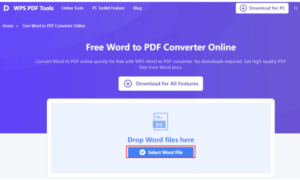People who live in Canada are accustomed to living in a first-world country, in all first-world countries, citizens enjoy all of the necessities of life. Part of the comfort rests on the knowledge that their children will receive a good education.
From the time a child is born, parents love and nurture their child. The security and happiness of the child are considered when the parents choose the home the family will live in. Special attention is paid to the school their child will attend. Supporting their child’s hopes and dreams is a responsibility the parents gladly carry.
Parents send their children to primary and secondary school at no cost. There may be small fees curricular classes such as music and art, but those are optional. This gives the parents 12 years to save for their child’s post-secondary education.
Post-secondary education is expensive and it falls to the parents to pay. Fortunately, Canada has a program that works with the parents to assist them in saving and growing their funds to pay for their children to further their education. Since 2005 Canada has offered a powerful tool to assist parents in saving for their children’s education. This is called RESP or Registered Education Savings Plan.
Expense
Most parents and grandparents want to see their children and grandchildren get the best education possible. They want to give them the tools they need to succeed in life without struggling. However, post-secondary education is expensive.
According to research reported by Macleans, the average cost of university in Canada is $19498.75 to $23485.00 per year. This is a very conservative estimate. The numbers rise considerably when you add the price of books, living on campus, and all of the other expenses that simply come with life.
Most families with children would find it next to impossible to save $20,000 per year for each child in their family to attend 2, 4, or 6-years. That is why starting your RESP contribution early gets the maximum from your government grants. Long term effect of compounding helps your earnings earn earnings.
Changes
The world of today is not the world of yesterday. A worldwide pandemic changes things. The way we live, socialize, work, go to school, and worship changes. We do not know what our children will have to face. However, we do know they must have all the knowledge we can afford them. Today is ours. But tomorrow will be theirs.
Save a little – Earn a LOT!
You are young, and you know you need to save money for your baby’s future. But you might be asking yourself why you don’t just stash your loose change in a coffee can. Well, for one, coffee cans do not earn income and for another, it can get pretty tempting to cash in a can of change and go for pizza on a weekend. But, collecting your loose change and depositing it into your RESP plan at the end of the month makes a significant difference in your child’s future. Let’s take a look.
- When you have an RESP for your child or children, any adult can deposit money for the child. A parent, grandparent, aunt, uncle, even a family friend. They can gift money for birthdays or holidays. Their gifts plus your “coffee can” savings add up over time and grow.
- The government pays an annual interest on the money
- The longer you keep the money in the RESP, the larger it becomes.
RESP Makes Your Money Grow
Below is a simple example of how two couples saved their money and what a difference the RESP account made for them.
John and Sue opened a traditional savings account for their child’s education. They deposited $100 bi-weekly into the non-registered account. The account did not qualify for the (CESG) Canada Education Saving Grant. John and Sue earned compounded interest and except for the first year, paid taxes on their savings at the rate of 6%. At the end of 18 -years, they had saved $46,800. They earned $23,495 in interest and had a total of taxable savings of $46,800.
Bob and Jane opened an RESP for their child’s education. They deposited $100 bi-weekly into the plan. The account qualified for the (CESG) Canada Education Savings Grant, which paid 20% of their investment up to $500 per year in non-taxable income into their account. Bob and Jane’s RESP earned compound income that included CESG growth. At the end of 18-years, they had saved $46,800. They earned $37,165 in income, $7,200 CESG maximum contribution, $6534 CESG income, for a total savings of $97,699.
Each couple had saved the same amount of money at the same time every month. The difference is where and how they saved it. The difference of $27,404 gives a university student an open door to many careers. Finances will not be an issue that forces his or her decision.
Learn now
Understanding anything to do with Government programs can be a bit overwhelming.
To get more information, visit this site. Get all the information before you shop for the location you want to open your account with. Now is the time to begin. Even small savings can grow into large sums over time. https://www.canada.ca/en/services/benefits/education/education-savings.html.
The RESP program was made for your children. This is open to everyone. There is no reason for any child to be left behind. This is one way you can help your child make their dreams come true.
If you are expecting a child, get started now. If you already have a child/children and you have not begun saving for them, it is not too late. Make the call. There are even plans which the government will help pay for if you are underprivileged. So, call today.



































